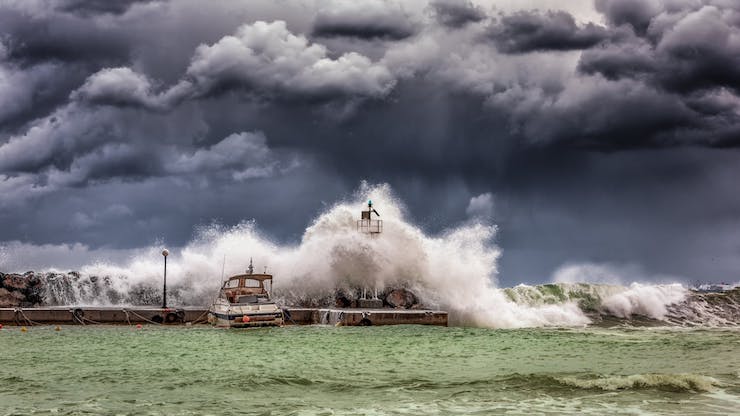Drones Aiding In Clean Up After “Bomb Cyclone” hits New England

New England is known for having short humid summers, brisk colorful autumns, snow filled winters, and chilly springs. The area tends to get an even amount of rain throughout the year along with heavy snow storms and an elongated winter. There are the occasional freak storms like the one that happened in May of 2006 that resulted in major flooding throughout New Hampshire and Massachusetts. However, this year it seams as if Mother Nature is spreading her wrath in New England a bit earlier than expected.
This past week a nor’easter made land in upstate New York and quickly barreled into New England. A nor’easter is similar to a hurricane with the biggest difference being that a nor’easter gathers it’s strength from cold winds coming off the ocean while a hurricane builds off of warm ocean winds. The storm that hit New England on Wednesday has been categorized as a “bomb cyclone”. This means that the severity and winds coming from the storm build up extremely fast over a 24 hour period rather than slow and steady, resulting in an instantaneous bomb like effect. By Thursday morning the damage was evident by debris all over the place and massive power outages. Main reported 222,000 outages while there were 220,000 in Massachusetts, and 40,000 in Connecticut. Almost half a million residents, schools, and businesses without power in an area that will continue to see dropping temperatures.
The road to cleaning up from the damage left by this bomb cyclone will be a long one. But what is most important right now is to assess the damage, make sure there are no injuries, and restore power. All of these are areas that drones can be used to assist and speed up the process. Drones can be used to get into areas with limited visibility or access due to downed power lines and trees. An operator can stay at a safe distance and fly a drone into the inaccessible area to search for anyone who may be trapped or injured. If a victim is identified, professionals can determine the best way of treating the situation without posing further risk to themselves or the victim. The drone can also be used to transport emergency supplies like first aid gear, water, and food to the victim while they await rescue.
The drone can also gather in depth data on the areas in question. This data can than be related to insurance companies and analyzed quickly to speed up the claims process. Once the claim process is in order, repairs can begin. All State Insurance, the second largest insurance company in the United States, has become one of the first companies to start utilizing drones in insurance claims. The drones make the claim process easier for the insurance company and the customers they serve, a win for everybody in the end.
Another way drones could possibly help in the aftermath of this recent storm is by helping bring back power to the countless homes desperately in need. When Hurricane Maria struck Puerto Rico in 2017 it took nearly a year for the government to fully restore power to the island. In some areas of Puerto Rico this process was sped up with the help of drones. Duke Energy, based out of North Carolina, sent 200 volunteers to help out in Puerto Rico. Along with the team was two FAA approved drone operators and five drones. They used the drones to expedite the location of broken utility poles and downed power lines that had become buried under debris. Next they used the drones to string new power lines.
There have been no reports yet as to how companies like New England Power plan to tackle the massive job ahead of them. In fact the area was still under a strong wind advisory until late Thursday evening. Hopefully power will be restored quickly and cleanup processes can begin allowing residents to get back to their normal lives.
|